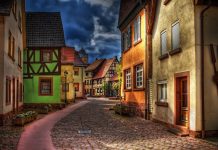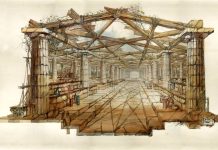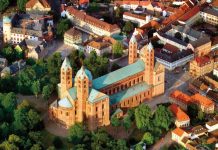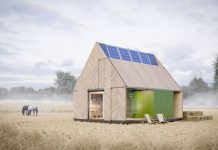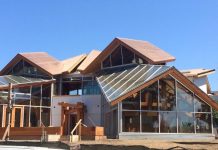The modern profession of architect originated in the Renaissance. In the changed historical conditions, an unusual type of customer first appeared. The new rulers of the cities and regions of Italy were not associated with the old aristocracy, since they came, most often, from among bankers or condottieri. They were energetic, cruel, had a broad outlook and demanded the realization of their plans, completely different from everything that was built in the Gothic era.
The ideas of the new rulers were born under the influence of the intellectual efforts of Early Renaissance thinkers, humanist philosophers. Returning to the study of the ancient heritage, they gradually, step by step, mastered all the wealth of thought of the philosophers of the ancient era, who put Man at the center of the universe in their works. This idea is especially pronounced in the formula of the Greek philosopher Protagoras, who believed that man is the measure of all things that exist. This formula was universal at that time.
In the Renaissance era, the same idea had a more specifically ideological sound. The Renaissance culture has rethought the role and place of man in the world in all ongoing processes. Then, according to the unshakable logic of the development of society, it was necessary to make changes in this very world, so that the existence of a person was not in isolation from his ideas. First of all, this concerned architecture, which was not only a visible image of the world, but also, as always, contained almost all the processes of life and activity of people. On the agenda was the creation of a centric temple – a model of the World, where a person who came to God, in accordance with the new ideas of the era, would find himself in the center of the Universe.
Such temples have not been built since antiquity, i.e. about a thousand years. There was nowhere to take them, nowhere to copy them, so I had to invent them. New architects, unrelated to the previous workshops, relying on the few ancient ruins and architectural remains, came up with a new architecture, imagined it to themselves, and then sketched it. So for the first time on the walls of the palace in Urbino appeared imaginary, but seemingly real, squares with temples-rotundas standing in their center, streets with palaces and other beautiful buildings.
The new city had an amazing harmony, in no way similar to the harsh and gloomy charm of medieval cities. Paradoxical as it sounds, Renaissance architecture was first painted, and only a century later (or so) built. It is curious that the very techniques of depicting objects in perspective that you studied in the first parts of this tutorial were developed by architectural artists specifically in order to create an illusion of an architectural structure on a flat surface in order to make it visible, accessible to everyone, and thereby bring the moment of its construction closer. A complicated, winding path, but there was no other way then, or there was none at all.
New professionals, especially in the Early Renaissance era, had no one to learn from. They were all amateurs in the original, respectful meaning of the word. The profession developed gradually, advancing through search, expensive trial and error. Renaissance thinkers combined their experiments and observations, as well as the experience of a few colleagues (and thanks to the narrowness of the circle of new masters, they all knew each other perfectly, although they did not always get along), into treatises – peculiar scientific and philosophical works.
One of the first such treatises devoted to the problems of perspective was created by the great theorist and practitioner of Early Renaissance architecture Leon Battista Alberti. It should be said that understanding Renaissance architecture is impossible without understanding the role played by treatises devoted to different aspects of the profession. The culture of Rebirth is in many ways a culture of reflection, research intellectual work, and the formation of fundamental science.
The creation of the new among the titans of the Renaissance follows the process of cognition, and in a variety of creative directions. This feature of the creative quest of the epoch provides an explanation of why the planning and spatial solutions of the Renaissance, especially Early and High, are very geometrized, static. They are, in fact, an embodied thought, an almost naked idea, which no one sought to cover up with any decorative draperies and excesses.
Clarity of design is mandatory for the Renaissance, it went hand in hand with the symmetry of the plan, the centrality of the spatial solution, the clear geometrization of the forms of the structure. Let us add that other characteristic features of Renaissance architecture can be called a planar, basically, solution of the facade, built according to the laws of exact proportionation.


